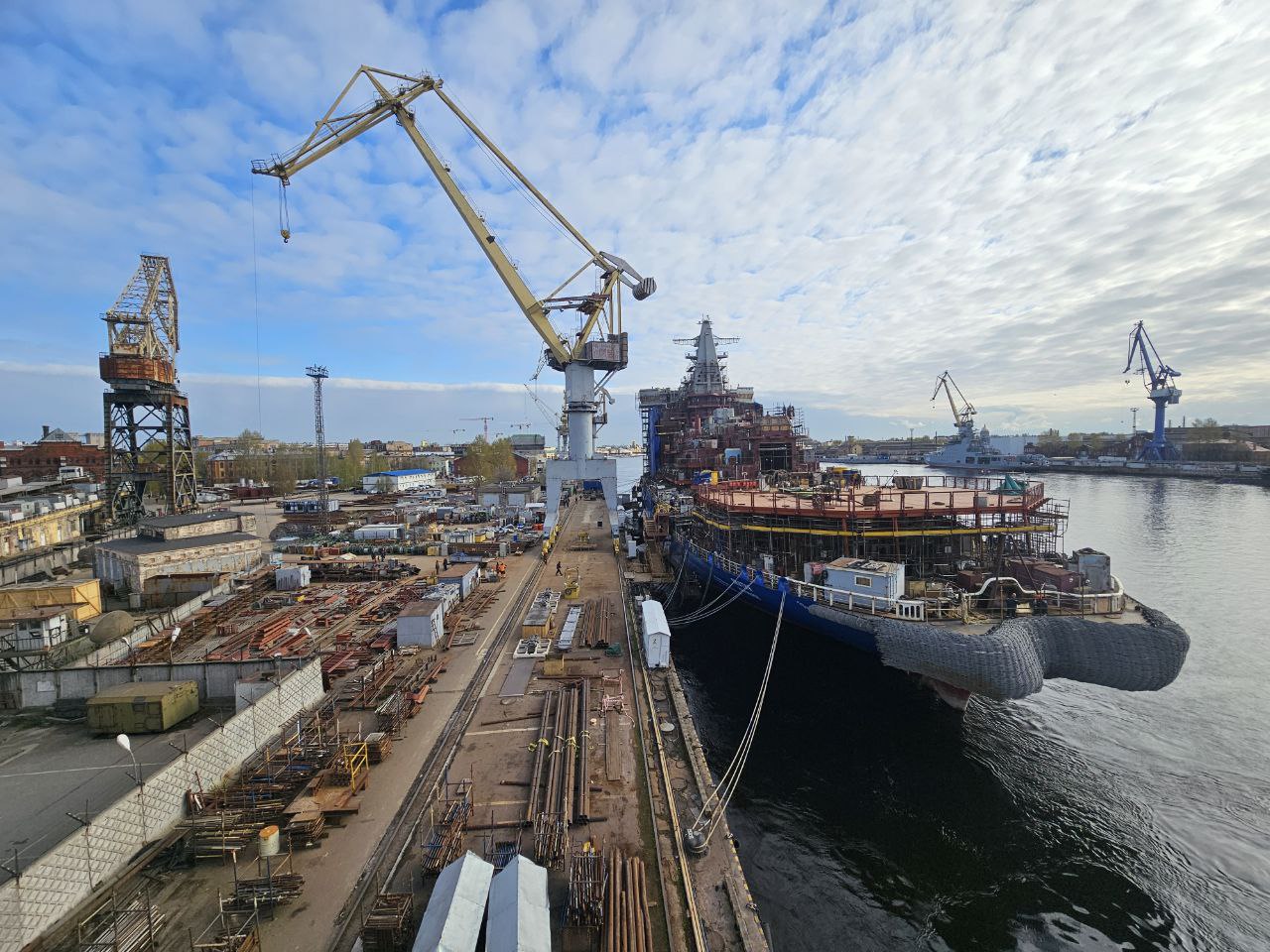The nuclear-powered icebreaker delivery is slated for the end of this year

Baltiysky Zavod Shipyard (Baltic Shipyard, part of United Shipbuilding Corp) has started mooring trials of the Project 22220 series nuclear icebreaker Yakutia. The shipyard’s specialists will check the functionality of the onboard systems and mechanisms, the quality of installation of the equipment, and will configure the equipment. The trials are held at outfitting dock of the shipyard and carried out according to special programmes and methods, USC said on its Telegram messenger channel.
The shipbuilder will be testing primarily the Yakutia main propulsion machinery: the vessel’s two RITM-200 water-cooled nuclear reactors with rated thermal power of 175 MW each.
“There is a large amount of work to be done and to prepare the nuclear icebreaker Yakutia for sea trials. The Project 22220 icebreakers “Arktika”, “Sibir” and “Ural”, built at the enterprise and handed over to the customer, are already successfully performing their duties on the shipping lanes of the Northern Sea Route. The Baltic Shipyard workers have gained invaluable experience in the construction of the series, which will help them commission the rest of the orders in a high-quality and timely manner,” Andrey Puchkov, General Director of USC said.
After completion of the dock-side trials, the Yakutia will be ready to begin sea trials.
A keel-laying ceremony for the Yakutia, the fourth (third of the series) multipurpose nuclear icebreaker of Project 22220, was held on May 26, 2020 and launching of the ship was on November 22, 2022. The nuclear-powered icebreaker is scheduled to commence operations at the end of 2024.

Construction of the fifth (4th in the series) the Chukotka is underway in St. Petersburg. Baltic Shipyard laid the keel of the Project 22220 series 5th nuclear-powered icebreaker Leningrad this January 26. The icebreakers were ordered by State Atomic Energy Corporation (Rosatom) for Atomflot. The series icebreakers are being built to the RS class.
There are three icebreakers of Project 22220 operating on the Northern Sea Route (NSR): the Arktika (entered service in 2020), the Siberia (in 2021) and the Ural (in 2022).
Multipurpose nuclear-powered icebreakers of Project 22220 ships are the world’s largest and most powerful icebreaking vessels. Their key task is to ensure year-round shipping in the Arctic. Icebreakers of 22220 design will form the basis of Russia’s civil icebreaking fleet in the near future.
Key particulars of Project 22220: engine rated power: 60 MW; cruising speed: 22 knots (in clear water); LOA - 174 m; beam: 34 m (33 m, DWL); height: 52 m; draft (DWL): 10.5 m/8.65 m; minimum draft: 9.3 m, full displacement: 33,540 tonnes; maximum icebreaking capability: 2.8-meter-thick ice (at full capacity and speed of 1.5-2 knots); expected service life: 40 years, crew: 53.
Saint-Petersburg, Russia based Baltic Shipyard (Baltiysky Zavod) was established in 1856 and today is a 100% subsidiary of the state-owned United Shipbuilding Corporation (USC). The shipyard specializes in the construction of Rank 1 surface crafts, ice class vessels with nuclear and diesel-electric propulsion, of nuclear floating energy units and floating distilling plants. Since its inception Baltic Shipyard has built over 600 ships and vessels. The shipbuilding company employs more than 6,000 people.



